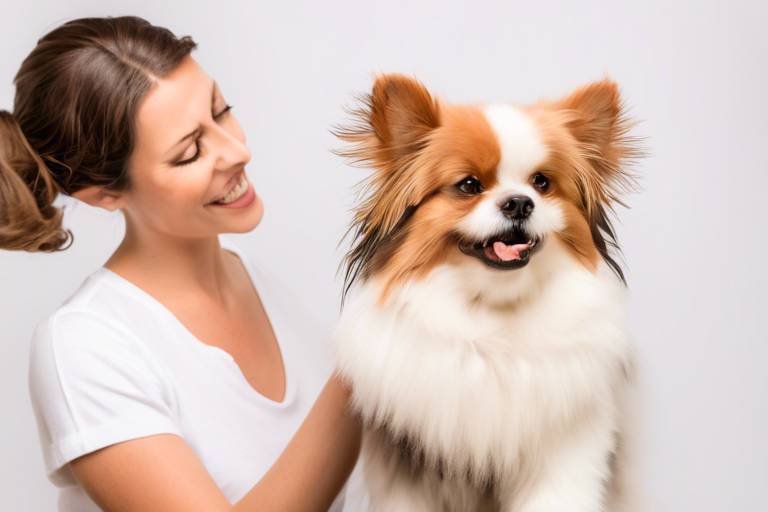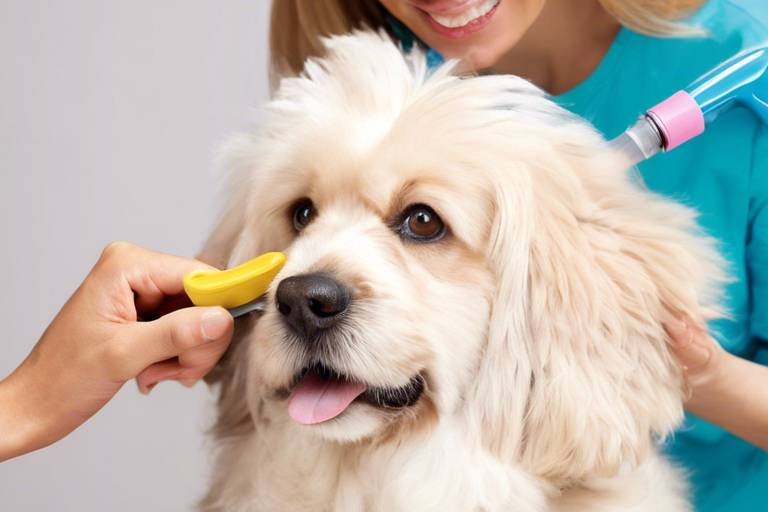How to Teach Your Pet to Tolerate Bathing
Bath time can be a challenging experience for many pets and their owners. The splashing water, unfamiliar scents, and the whole process can lead to anxiety for your furry friend. But fear not! With a little patience and the right techniques, you can transform bath time from a dreaded event into a pleasant bonding experience. This article explores effective techniques and tips to help your pet feel comfortable and relaxed during bath time, making the experience enjoyable for both you and your furry friend.
Before diving into the bathing process, it’s essential to understand why your pet might be anxious about it. Pets can have various fears, from the sound of running water to the sensation of being wet. Recognizing these fears is crucial in addressing them effectively. For instance, some pets might have had a negative experience with water in the past, while others might simply be unfamiliar with the bathing process. By understanding your pet's behavior, you can tailor your approach to suit their needs.
Preparation is key to a successful bathing experience. You wouldn’t want to jump into a cold pool without warming up first, right? The same goes for your pet! Start by gathering all the essential supplies you’ll need:
- Pet shampoo (preferably one that is gentle on the skin)
- Soft towels for drying
- A non-slip mat to prevent slipping
- A brush to remove tangles before bathing
Creating a stress-free atmosphere is vital. Ensure the bathing area is calm and quiet, free from distractions that could startle your pet. This preparation sets the stage for a more relaxed experience.
Selecting an appropriate bathing location can significantly impact your pet's comfort. Ideally, you want a spot that minimizes distractions and enhances relaxation. Consider areas like:
- Your bathroom, where you can control the environment
- A laundry room, which is usually quiet and easy to clean
- Outdoor spaces, if your pet enjoys the fresh air
When weighing the pros and cons of indoor and outdoor bathing options, think about your pet's preferences. Indoor baths allow for more control over the environment, while outdoor baths can be more fun and less restrictive. However, be cautious of the weather and ensure your pet remains comfortable throughout the process.
Creating a cozy bathing area is essential. Use non-slip mats to prevent any slips and falls, which can be frightening for your pet. Adding familiar items, such as their favorite toy or blanket, can also help ease their anxiety. Think of it as creating a little spa retreat for your furry friend!
Just like you wouldn’t dive into a freezing lake, your pet shouldn’t be thrown into the bath without a warm-up. Gradual exposure to water can help your pet acclimate. Start by letting them play with a wet sponge or a bowl of water. This gentle introduction can help them associate water with fun rather than fear.
Positive reinforcement is a powerful tool in training. It’s all about rewarding good behavior to encourage your pet during baths. Whether it’s a tasty treat, a favorite toy, or lots of praise, make sure your pet knows they’re doing a great job!
Identifying the right rewards is crucial. Some pets respond well to treats, while others might prefer playtime with their favorite toy. Pay attention to what motivates your pet and use that to your advantage during bath time.
Consistency is important for building trust. Establishing a regular bathing routine can help your pet understand that bath time is a normal part of life. Just like you might have a morning coffee ritual, your pet will benefit from knowing when to expect their bath.
Even with the best preparation, some pets may resist baths. It’s essential to remain calm and patient during these moments. If your pet is acting out, take a step back and reassess your approach. Sometimes, a little break can make all the difference!
Being aware of your pet's stress signals can help you address their needs. Signs such as whining, hiding, or excessive panting indicate that your pet may be overwhelmed. Recognizing these signs allows you to adjust your technique and make the experience more comfortable for them.
There are various calming techniques you can utilize during bath time. Speaking to your pet in a soothing voice can have a calming effect, as can gentle touches. Think of it as a comforting hug during a scary moment; your pet will appreciate your efforts to make them feel secure.
After bathing, proper care is essential for your pet's well-being. Just like you’d want to wrap yourself in a warm towel after a shower, your pet deserves the same. Drying them off gently with a soft towel can help them feel secure and comfortable.
Understanding the best methods for drying your pet can prevent discomfort. Use a towel to absorb excess water, and if your pet is comfortable with it, a low-setting blow dryer can help. Just be sure to keep it at a distance to avoid startling them!
Lastly, reinforcing positive behavior with rewards after a bath can help your pet associate the experience with good feelings. Whether it’s a tasty treat or a fun play session, celebrating their bravery can reduce future anxiety and make bath time a more enjoyable experience.
Q: How often should I bathe my pet?
A: This depends on the type of pet you have. Generally, dogs may need a bath every 4-6 weeks, while cats often require less frequent bathing. Always consult your veterinarian for specific advice.
Q: What if my pet hates water?
A: Start with gradual introductions and positive reinforcement. Make the experience fun and rewarding to help them overcome their fear.
Q: Can I use human shampoo on my pet?
A: No, human shampoos can be too harsh for pets. Always use products specifically designed for their skin type.
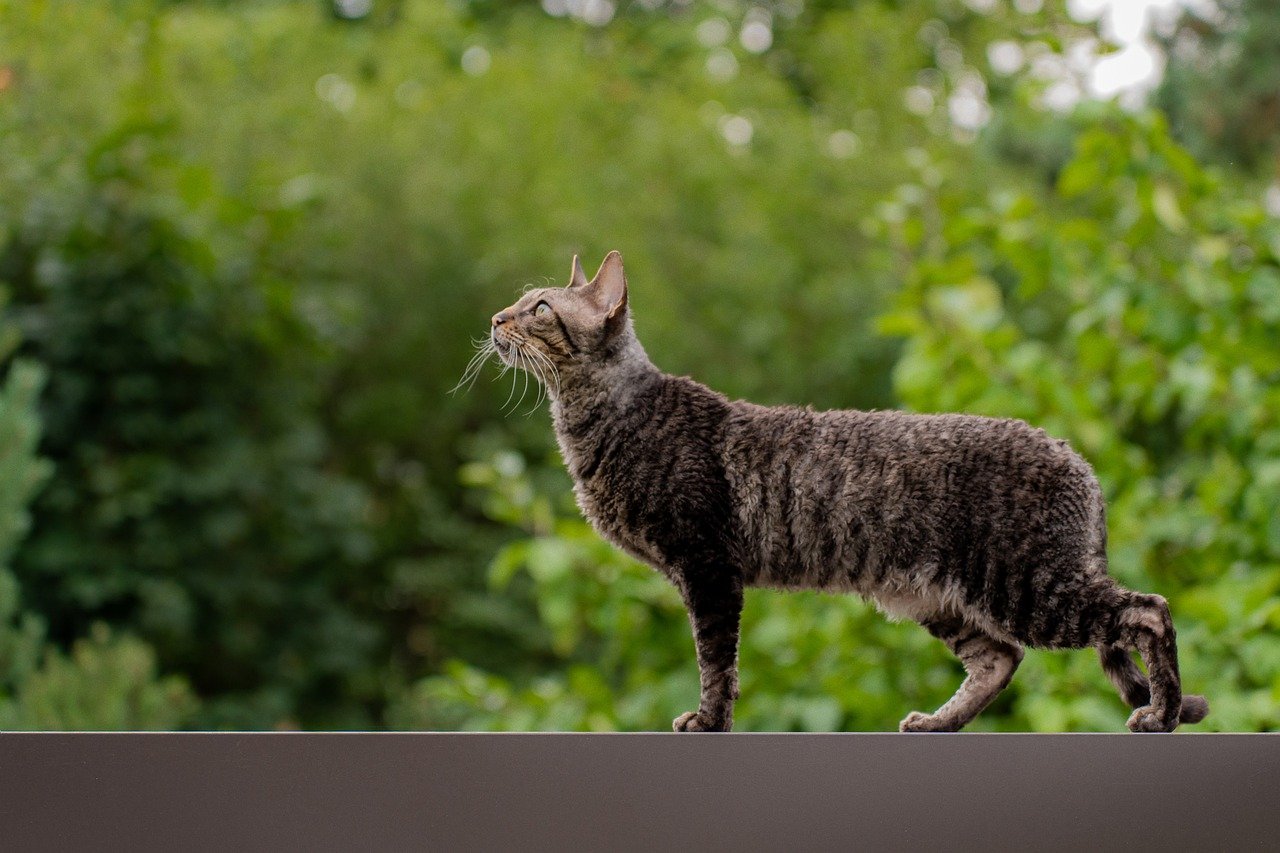
Understanding Your Pet's Behavior
When it comes to bath time, many pets exhibit signs of anxiety, fear, or even outright resistance. Understanding the underlying reasons for these behaviors is crucial for creating a more positive bathing experience. For instance, pets may fear water because they associate it with past negative experiences, such as being sprayed or slipping in a wet environment. They might also feel vulnerable when they are in a confined space, such as a bathtub, which can heighten their stress levels.
Another factor to consider is that pets are creatures of habit. Sudden changes in their routine, including the introduction of bath time, can lead to confusion and anxiety. Just like humans, pets thrive on predictability. If your furry friend is not accustomed to regular baths, the experience can be overwhelming. It’s essential to recognize these behaviors and address them with empathy and understanding.
Common signs of anxiety in pets during bath time include:
- Whining or barking
- Trembling or shaking
- Avoidance behaviors, such as hiding
- Pacing or restlessness
By observing these signs, you can tailor your approach to better suit your pet's needs. For example, if your dog tends to hide when they see the bath supplies, you might want to introduce those items gradually, allowing them to sniff and explore without the pressure of immediate bathing. This gradual exposure can help build their confidence and reduce anxiety.
Moreover, some pets may have a natural aversion to water due to their breed characteristics. For instance, certain breeds, like cats, are generally less fond of water than others. Understanding your pet's breed tendencies can provide insights into their behavior. Additionally, age can play a role; older pets may have mobility issues that make them uncomfortable in slippery or confined spaces.
Recognizing these factors is the first step toward making bath time a more enjoyable experience for both you and your pet. By addressing their fears and anxieties with patience and understanding, you can foster a sense of security that will transform bath time from a dreaded chore into a bonding experience.
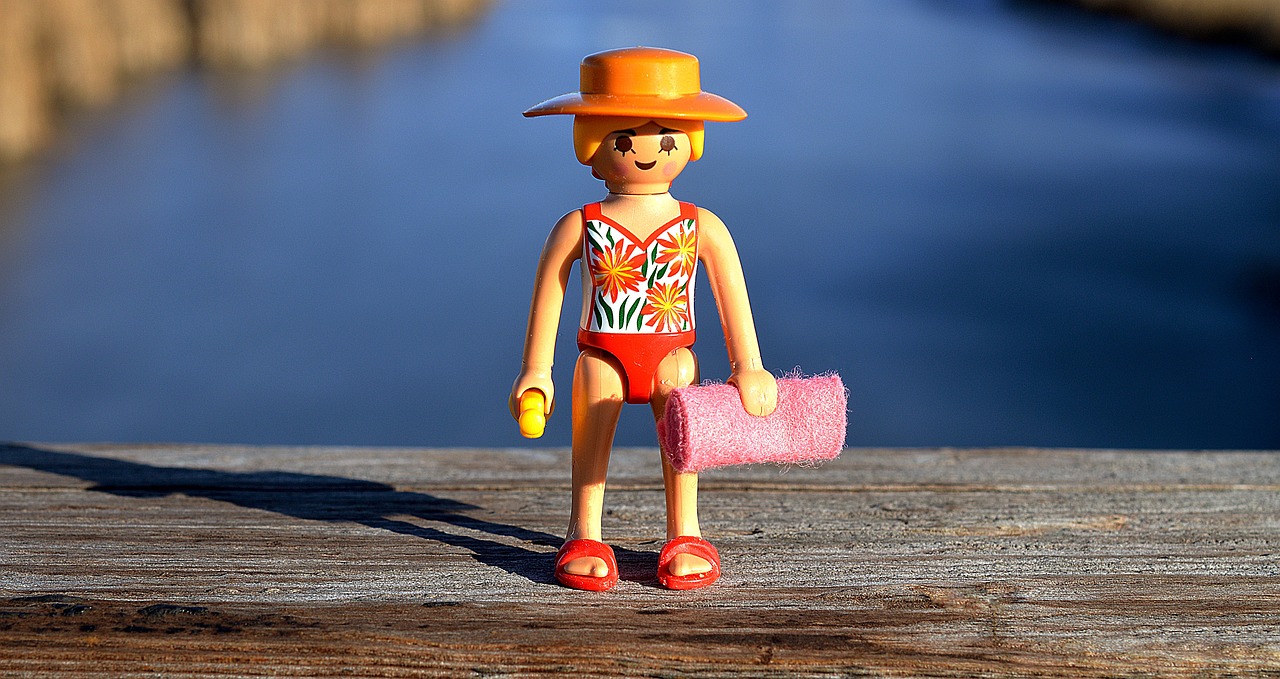
Preparing for Bath Time
When it comes to preparing for bath time, the mantra is simple: Preparation is key. Think of it as setting the stage for a performance; if everything is in place, the show will go on smoothly. First, gather all the necessary supplies before you even think about introducing your pet to water. This way, you won't have to leave your furry friend unattended while you dash around the house looking for shampoo, towels, or toys. A well-prepared environment can significantly reduce anxiety for both you and your pet.
So, what supplies do you need? Here’s a quick rundown:
- Pet-friendly shampoo: Always choose a product specifically designed for your pet's coat type.
- Towels: Have a few ready to dry your pet off after the bath.
- Non-slip mat: This can help prevent slips and make your pet feel more secure.
- Brush: Brushing your pet before the bath can help remove loose fur and make the bathing process easier.
- Water source: Whether it's a bathtub, sink, or outdoor hose, ensure you have a steady supply of lukewarm water.
Next, consider the environment where you’ll be bathing your pet. The right location can be a game changer. You want to choose a spot that minimizes distractions and feels safe. A quiet bathroom or laundry room works well, while outdoor baths can be refreshing on a warm day. However, make sure your pet isn’t overwhelmed by the sights and sounds of the great outdoors. If you opt for an outdoor bath, try to find a shaded area where your pet can feel comfortable.
When deciding between an indoor or outdoor bath, think about your pet's personality. Some pets thrive in the open air, while others prefer the coziness of indoors. Here’s a quick comparison:
| Indoor Baths | Outdoor Baths |
|---|---|
| Controlled environment | Fresh air and natural light |
| Less noise and distractions | Potential for distractions from wildlife or other pets |
| Easy access to towels and supplies | Can be messy, requiring more cleanup |
Once you’ve settled on a location, it’s time to set up a comfortable space. This is where the magic happens! Lay down a non-slip mat to prevent any slips. You might also want to include a few of your pet’s favorite toys or blankets to create a sense of familiarity. Think of it as creating a little spa retreat for your furry friend. The more comfortable they feel, the easier the bath will be.
Finally, introducing water gradually is essential. Instead of turning on the shower and blasting them with water, start small. Use a damp cloth or a gentle spray to wet their paws first. This helps them get accustomed to the sensation without feeling overwhelmed. Remember, patience is your best friend here. Just like humans, pets need time to adjust to new experiences.
Choosing the Right Location
When it comes to bathing your pet, the location can make all the difference in ensuring a stress-free experience. Imagine trying to relax in a noisy, chaotic environment—your pet feels the same way! Therefore, selecting the right spot is crucial. Ideally, you want a place that is quiet, comfortable, and free of distractions. This could be a bathroom, laundry room, or even a backyard if your pet enjoys the outdoors. The goal is to create a space where your furry friend feels safe and secure.
Consider the following factors when choosing the bathing location:
- Noise Levels: Pick a spot away from loud appliances, barking dogs, or busy street noise. A calm environment helps your pet relax.
- Familiarity: If your pet is more comfortable in certain areas of the house, use those spots to your advantage. Familiar scents and surroundings can ease anxiety.
- Accessibility: Ensure the location is easily accessible for both you and your pet. If your pet is small, a sink or bathtub may work, while larger pets might need a spacious area.
Additionally, it's important to consider the temperature of the bathing area. A location that is too cold or too hot can make your pet uncomfortable and resistant to the bath. A moderate temperature is ideal, as it helps keep your pet relaxed during the process. You can also use non-slip mats to prevent slips and falls, making your pet feel more secure.
Lastly, think about the setup of your bathing area. Have all your supplies within arm's reach—shampoo, towels, and treats—so you don't have to leave your pet unattended. This not only keeps your pet safe but also helps the bathing process go smoothly. By carefully choosing the right location, you set the stage for a positive bathing experience that both you and your pet can enjoy.
1. How often should I bathe my pet?
The frequency of baths depends on your pet's breed, coat type, and lifestyle. Generally, dogs should be bathed every 4-6 weeks, while cats may need less frequent baths. Always consult your veterinarian for personalized advice.
2. What if my pet hates water?
Start by gradually introducing your pet to water in a calm manner. Use positive reinforcement like treats and praise to create a more enjoyable experience.
3. Can I use human shampoo on my pet?
No, human shampoo can irritate your pet's skin. Always use a shampoo specifically formulated for pets to ensure their skin and coat remain healthy.
4. How can I dry my pet after a bath?
You can use a soft towel to gently pat your pet dry. For longer-haired pets, a pet-safe blow dryer on a low setting can be effective, but ensure it's not too hot and keep it at a safe distance.
5. What should I do if my pet becomes anxious during bath time?
Recognize the signs of stress and try calming techniques such as speaking softly or using gentle touches. If necessary, take breaks to allow your pet to relax before continuing.
Indoor vs. Outdoor Baths
When it comes to bathing your pet, one of the first decisions you'll need to make is whether to opt for an indoor or outdoor bath. Each option has its own set of advantages and disadvantages that can significantly affect your pet's comfort level and the overall bathing experience. Let's dive into the pros and cons of both settings to help you make an informed choice.
Starting with indoor baths, they offer a controlled environment where you can manage the temperature, lighting, and distractions. This is particularly beneficial for pets that may be anxious in unfamiliar surroundings. Additionally, indoor bathing can be less affected by weather conditions, meaning your furry friend can enjoy a bath regardless of rain or shine. However, indoor baths can sometimes feel cramped, especially if you have a larger pet. It’s essential to ensure that the space is safe, with non-slip mats to prevent any accidental slips.
On the other hand, outdoor baths can be a refreshing experience for your pet, especially during warm weather. The natural sunlight and fresh air can create a more enjoyable atmosphere, allowing your pet to feel more at ease. Outdoor baths also provide ample space, which can be particularly advantageous for larger breeds. However, there are some considerations to keep in mind. For example, outdoor bathing can lead to distractions from other animals, people, or noises, which may increase your pet's anxiety. Furthermore, you must be mindful of the temperature; cold water can be uncomfortable, and hot weather can lead to overheating.
To help you weigh the options, here’s a quick comparison:
| Feature | Indoor Baths | Outdoor Baths |
|---|---|---|
| Control Over Environment | High | Low |
| Space | Limited | Ample |
| Weather Dependency | No | Yes |
| Distractions | Minimal | Potentially High |
| Comfort | Consistent | Variable |
Ultimately, the choice between indoor and outdoor baths will depend on your pet's personality, your available space, and the conditions of the day. If your pet thrives in a calm, controlled environment, an indoor bath might be the best option. Conversely, if they love the outdoors and feel more relaxed in open spaces, then an outdoor bath could be the way to go. Remember, the goal is to create a positive experience that your pet will look forward to, regardless of where the bath takes place.
- How often should I bathe my pet? It depends on the breed and lifestyle. Generally, every 1-3 months is sufficient for most pets.
- What type of shampoo should I use? Always use pet-specific shampoos, as human products can irritate their skin.
- Can I bathe my pet in the winter? Yes, but ensure the water is warm and that they are dried thoroughly afterward to prevent them from getting cold.
Setting Up a Comfortable Space
Creating a cozy and inviting bathing area for your pet can make all the difference in transforming bath time from a dreaded chore into a delightful experience. Think of this space as a sanctuary where your furry friend can feel safe and relaxed. Start by choosing a spot that is quiet and free from distractions. This could be a bathroom, laundry room, or even a designated outdoor area, depending on your pet's preferences.
Consider incorporating familiar items into the bathing area. For instance, placing their favorite blanket or toy nearby can provide comfort and a sense of security. The scent of their belongings can help ease anxiety, making them feel more at home during bath time. Additionally, using non-slip mats is essential. Not only do they prevent slips and falls, but they also create a secure footing for your pet, which can be a significant source of anxiety for some animals.
Lighting plays a crucial role in setting up a comfortable space as well. Soft, natural light is preferable, as harsh fluorescent lights can be intimidating. If you're bathing indoors, try to use curtains or shades to diffuse the light. If you’re outdoors, consider bathing your pet during the early morning or late afternoon when the sun is less intense.
Temperature is another factor that shouldn’t be overlooked. Make sure the bathing area is warm enough to prevent your pet from getting cold, especially after wetting their fur. You can use a space heater to maintain a comfortable temperature if you’re indoors. If bathing outside, ensure the water is lukewarm, as cold water can be shocking and uncomfortable for your pet.
Finally, remember that patience is key. Spend some time in the bathing area with your pet before introducing water. Allow them to explore and sniff around, helping them associate the space with positive experiences. Over time, this familiarization will lead to a more relaxed and enjoyable bath time for both of you.
Introducing Water Gradually
When it comes to bathing your pet, the key to a stress-free experience is gradual exposure to water. Just like humans, pets can feel overwhelmed when suddenly confronted with something they're not used to. Imagine being tossed into a pool without warning; it's not exactly a pleasant experience, right? By introducing water slowly, you can help your furry friend acclimate to the idea of bath time without the fear and anxiety that often accompanies it.
Start by familiarizing your pet with the sound and sight of running water. You can do this by letting them observe you while you fill the tub or sink. Make it a fun and engaging moment! Use an excited tone and talk to them as if you're sharing a secret. This will help create a positive association with the water. Once they seem comfortable, you can take the next step.
Next, consider using a small container or cup to introduce water gradually. Instead of turning on the shower or hose right away, dip your hand in the water and gently splash a little on your pet's paws or legs. This small amount of water can be less intimidating. You might even want to add some of their favorite toys to the water to make it feel like a game. This way, they won’t just see it as a bath, but rather as a fun activity!
As your pet becomes more comfortable, you can slowly increase the amount of water. Here are some tips to keep in mind:
- Stay Calm: Your demeanor can influence your pet's behavior. Stay relaxed and positive.
- Use Treats: Reward your pet with treats after each successful exposure to water.
- Praise Frequently: Use a cheerful voice to praise your pet, reinforcing their bravery.
Remember, patience is key! Each pet is unique, and some may take longer to adjust than others. If your pet shows signs of distress, take a step back and try again later. The goal is to make bath time a positive experience rather than a dreaded chore. With consistent practice, your pet will learn that water can be enjoyable!
Q: How long should I take to introduce water to my pet?
A: It varies for each pet. Some may take a few days, while others might need weeks. Go at your pet's pace.
Q: What if my pet is still scared after several attempts?
A: If your pet continues to show fear, consider consulting a professional trainer who specializes in pet anxiety.
Q: Are there specific breeds that are more resistant to water?
A: Yes, some breeds, like cats and certain dog breeds, may have a natural aversion to water. Tailor your approach accordingly.
Q: Can I use a bathtub for my pet?
A: Absolutely! Just ensure it’s a safe and comfortable space for them. Consider using non-slip mats to prevent slipping.
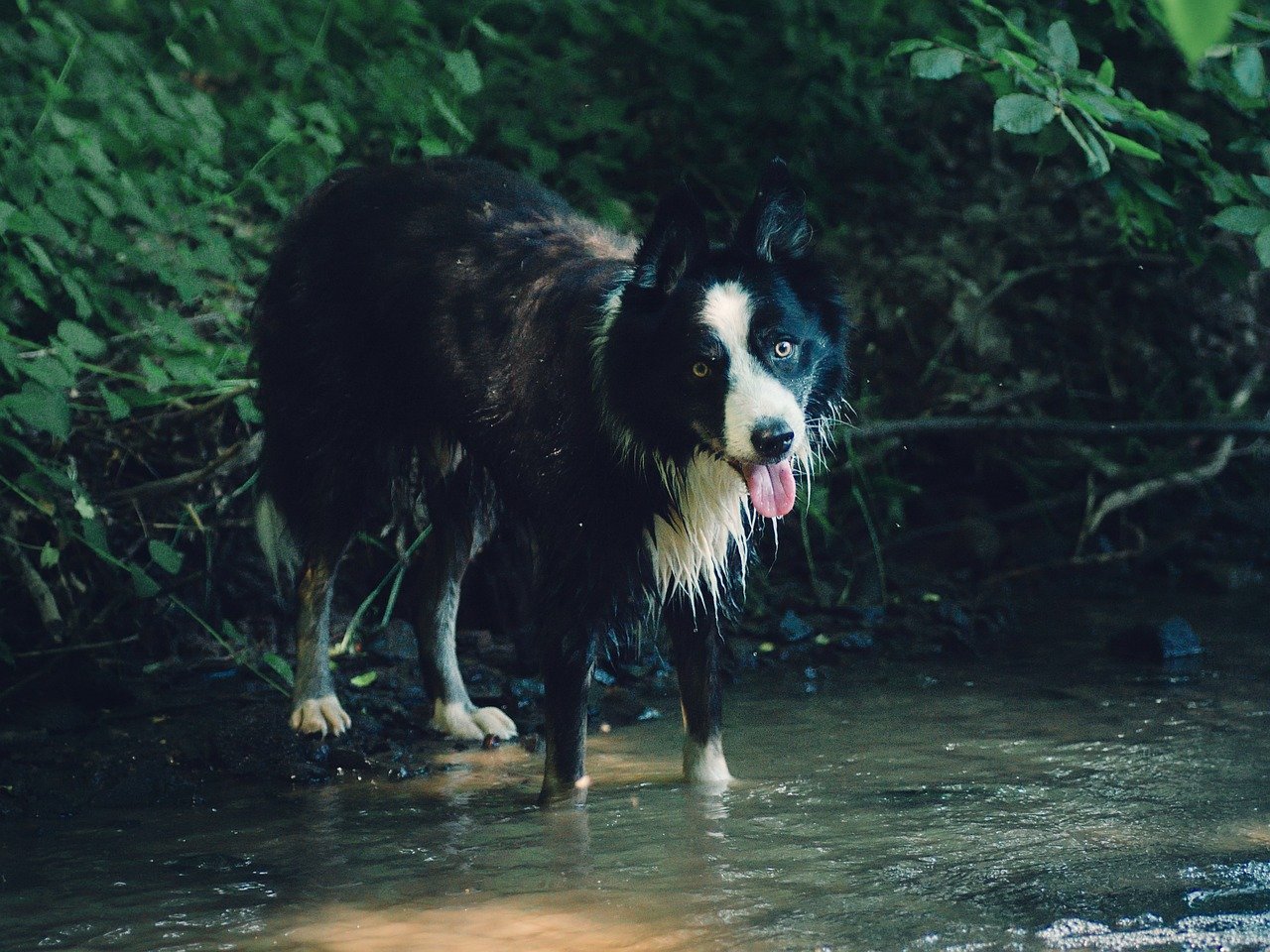
Using Positive Reinforcement
When it comes to teaching your pet to tolerate bathing, positive reinforcement is your best friend. Imagine you're trying to learn a new skill, and every time you succeed, someone rewards you with a treat or a compliment. Wouldn't that make you more eager to try again? The same principle applies to our furry companions. By rewarding them for calm behavior during bath time, you help them associate the experience with positive feelings.
So, what exactly does positive reinforcement look like in practice? First, you need to identify what motivates your pet. For some, it might be their favorite treat, while for others, a beloved toy or even a game of fetch can do the trick. Once you've pinpointed these motivators, you can start incorporating them into bath time.
For example, as you introduce your pet to the bathing area, offer them a treat or a toy. This not only diverts their attention from the impending bath but also creates a positive atmosphere. You can say something like, "Good boy! Look at this yummy treat!" while presenting the reward. This simple act can significantly reduce anxiety and make them more willing to cooperate.
It's also essential to be consistent with your rewards. If your pet shows calm behavior, even for a brief moment, immediately reward them. This reinforces the idea that being calm during bath time is a good thing. Over time, your pet will start to understand that behaving well leads to treats and praise, making them more likely to repeat that behavior.
Additionally, establishing a routine can enhance the effectiveness of positive reinforcement. Pets thrive on consistency, and if they know that bath time is followed by a play session or a treat, they may become more accepting of the process. Consider creating a simple schedule that includes bathing, followed by rewards and playtime. This way, your pet will look forward to bath time as a part of their regular routine.
In summary, using positive reinforcement is a powerful method to help your pet feel more comfortable during bath time. By rewarding good behavior and establishing a routine, you can transform a dreaded experience into a bonding opportunity. Remember, the goal is to create a stress-free environment for both you and your furry friend, where bath time becomes a time of joy rather than anxiety.
- How long should I wait before rewarding my pet during bath time? It's best to reward your pet immediately after they exhibit calm behavior. This helps them make the connection between their behavior and the reward.
- Can I use verbal praise as a reward? Absolutely! Verbal praise is a great form of positive reinforcement. Just make sure your tone is cheerful and encouraging.
- What if my pet doesn't respond to treats? If treats aren't motivating for your pet, try using their favorite toy or engaging in a fun activity as a reward.
- Is it necessary to have a routine for bath time? While not strictly necessary, having a routine can help your pet feel more secure and less anxious about baths.
Choosing Effective Rewards
When it comes to teaching your pet to enjoy bath time, choosing the right rewards is essential. Think of rewards as the golden ticket that transforms a potentially stressful experience into a delightful one. You want your furry friend to associate bath time with something positive, so it’s crucial to select rewards that resonate with them personally. Every pet is unique, and what excites one may not excite another. So, let’s dive into some effective rewards that can help make bath time a breeze!
First and foremost, consider treats. These little morsels can work wonders in motivating your pet. Look for treats that are not only tasty but also healthy. You might want to keep a variety on hand, from crunchy biscuits to soft chews, to see which ones your pet prefers. For example:
| Treat Type | Texture | Flavor |
|---|---|---|
| Crunchy Biscuits | Crunchy | Chicken, Beef, or Peanut Butter |
| Soft Chews | Soft | Fish or Liver |
| Freeze-Dried Treats | Crispy | Variety of Meats |
Besides treats, toys can also be a great way to reward your pet. A favorite squeaky toy or a new ball can serve as a fantastic incentive. You can introduce the toy during the bath, allowing your pet to play with it while they’re being bathed, which can help distract them from the water. It’s like turning bath time into playtime! Just make sure the toy is waterproof and easy to clean.
Another rewarding approach is praise. Don’t underestimate the power of your voice! A soothing tone and enthusiastic words can reassure your pet. Use phrases like “Good boy!” or “You’re such a brave girl!” while bathing them. This positive reinforcement can be incredibly effective, as pets often respond well to their owner’s emotions. Pairing verbal praise with treats can create a strong association between bath time and positive experiences.
Lastly, consider the timing of your rewards. Offering a treat or praise immediately after a successful bathing session reinforces the behavior you want to encourage. Over time, your pet will learn that bath time leads to fun rewards, making them more willing to jump in the tub next time. Remember, patience is key! It may take several sessions for your pet to fully embrace bath time, but with the right rewards, you’ll be well on your way to a stress-free experience.
- How long should I wait before rewarding my pet after a bath?
It’s best to reward your pet immediately after the bath, while the positive experience is still fresh in their mind. This helps them associate bath time with good feelings.
- What if my pet doesn’t respond to treats?
If your pet isn’t motivated by treats, try using their favorite toy or offering lots of verbal praise. Every pet is different, so it may take some experimentation to find what works best.
- Are there any treats I should avoid?
Avoid treats that are high in sugar or artificial ingredients. Always opt for natural, healthy options that won’t upset your pet’s stomach.
Establishing a Routine
When it comes to making bath time a more enjoyable experience for your pet, is key. Just like humans, pets thrive on consistency. Imagine how you feel when you have a predictable schedule; it brings a sense of security and comfort. By creating a regular bathing routine, you can help your furry friend understand what to expect, which can significantly reduce anxiety and resistance during bath time.
Start by choosing a specific day and time each week dedicated to bathing your pet. This could be every Saturday morning or Wednesday evening—whatever fits best into your schedule. The important thing is to stick to it! Over time, your pet will begin to associate that particular time with bathing, and they may even start to look forward to it. Think of it as marking an appointment on your calendar, but for your pet—an event they can anticipate.
In addition to setting a specific time, consider establishing a pre-bath ritual that signals to your pet that it’s almost bath time. This could be as simple as gathering their favorite towel or treating them to a special snack just before heading to the bathing area. These small actions can create a positive association with the upcoming bath, making it feel less daunting. You might even want to incorporate a few minutes of playtime before the bath to help your pet expend some energy and feel more relaxed.
Another important aspect of a bathing routine is to keep the bathing process consistent. Use the same bathing products, the same water temperature, and the same techniques each time. This familiarity can help your pet feel more at ease. If you have multiple pets, try to bathe them in the same order each time as well. This creates a predictable environment, which can be incredibly soothing for them.
Furthermore, don't forget to be patient and attentive during bath time. If your pet shows signs of stress or discomfort, take a moment to reassure them. Use a calm voice and gentle touches to help them feel safe. If needed, you can even take breaks during the bath to allow them to regroup. Remember, the goal is to create a positive experience that they will associate with bath time.
In summary, establishing a routine for bathing your pet not only helps them feel more secure but also makes the entire experience smoother for both of you. With time, patience, and consistency, you'll notice that bath time transforms from a dreaded chore into a bonding experience that your pet will embrace.
- How often should I bathe my pet? - It depends on the breed and lifestyle of your pet. Generally, dogs may need a bath every 4-6 weeks, while cats usually groom themselves and may require baths less frequently.
- What if my pet hates water? - Gradually introducing water and using positive reinforcement can help ease their anxiety. Consider using a spray bottle or damp cloth to get them used to the sensation.
- Can I use human shampoo on my pet? - No, it's best to use pet-specific shampoos as human products can irritate their skin.
- What should I do if my pet becomes aggressive during bath time? - If your pet shows signs of aggression, it’s crucial to remain calm. Stop the bath and consult a professional trainer or veterinarian for guidance.

Dealing with Resistance
Bath time can be a real struggle for some pets. You might find yourself wrestling with a furry tornado that’s determined to escape the tub! It’s essential to understand that resistance often stems from fear or discomfort. Just like how we might resist a cold shower on a chilly morning, our pets can feel the same way about baths. The key is to approach this situation with patience and empathy.
First off, it’s crucial to recognize the signs of stress in your pet. Some common indicators include:
- Whining or barking
- Attempting to escape
- Excessive panting
- Hiding or cowering
By being aware of these behaviors, you can better understand your pet’s feelings and adjust your approach. For instance, if your dog is whining, it might be time to take a break and try again later. Remember, forcing your pet into the bath can lead to a more significant aversion in the future.
So, how can you effectively manage this resistance? One of the best techniques is to use calming methods. Speak to your pet in a soothing voice, as your tone can significantly impact their mood. You can also try gentle touches to help them relax. Think of it as giving them a reassuring hug; it can make all the difference. Additionally, consider playing soft music in the background to create a more tranquil environment.
Another effective strategy is to break the process down into smaller, manageable steps. Instead of expecting your pet to jump straight into the bath, start with just letting them get used to the bathing area. You can place their favorite toys around or even let them sit on the edge of the tub while you fill it with water. Gradually introduce them to the water by splashing a little on their paws first. This gradual exposure can help ease their fears and make them more willing to cooperate.
Finally, if your pet continues to resist despite your best efforts, it might be worth consulting a professional trainer or a veterinarian. Sometimes, there are underlying issues that need addressing, such as negative past experiences or health concerns. Remember, your pet’s comfort and well-being should always come first!
Here are some common questions pet owners have regarding bathing their pets:
- How often should I bathe my pet? - It depends on the breed and lifestyle of your pet. Generally, once a month is sufficient for most dogs, while cats often groom themselves and may only need a bath occasionally.
- What if my pet hates water? - Gradual exposure and positive reinforcement can help. Consider using a damp cloth to clean them instead of a full bath.
- Can I use human shampoo on my pet? - No, it’s best to use pet-specific shampoos as human products can irritate their skin.
Recognizing Signs of Stress
When it comes to bathing your pet, understanding their emotions is just as important as the act itself. Pets, much like us, can exhibit signs of stress that are often subtle yet significant. Being able to recognize these signs can transform bath time from a dreaded chore into a more enjoyable experience for both you and your furry friend. So, what should you be on the lookout for?
First and foremost, body language plays a crucial role. A relaxed pet will typically have a loose posture, while a stressed pet may display signs such as:
- Tucked Tail: If your pet's tail is tucked between their legs, it's a clear indicator that they are feeling anxious.
- Flattened Ears: Ears that are pinned back against the head can signify discomfort or fear.
- Excessive Panting: While panting can be normal after exercise, if your pet is panting heavily while at rest, it might indicate stress.
Additionally, vocalizations can also provide clues about your pet's emotional state. A sudden increase in whining, growling, or barking can signal that your pet is feeling overwhelmed. It's essential to listen to these sounds, as they are their way of communicating discomfort. Furthermore, if your pet tries to escape or hide, this is a strong indication that they are not enjoying the bathing process.
Another important aspect to consider is behavioral changes. If your pet suddenly becomes aggressive or overly submissive during bath time, it might be time to reassess how you're approaching the situation. For instance, if they were once eager to jump into the tub but are now reluctant, this could indicate a negative association with baths. Monitoring these changes can help you adapt your techniques and make bath time more pleasant.
Lastly, keep an eye out for physical signs of stress. Excessive drooling, shaking, or even attempts to escape can indicate that your pet is not coping well with the bathing experience. These signs are not just fleeting; they can lead to long-term anxiety if not addressed. Recognizing these stress signals early on allows you to modify your approach, creating a more positive environment for your pet.
In summary, being aware of your pet's stress signals is vital for a successful bathing experience. By tuning into their body language, vocalizations, behavioral changes, and physical signs, you can ensure that your pet feels safe and comfortable during bath time. Remember, the goal is to create a positive association with baths, so take the time to understand what your furry friend is trying to communicate!
Q1: How can I tell if my pet is stressed during a bath?
A1: Look for signs such as a tucked tail, flattened ears, excessive panting, or attempts to escape. Vocalizations like whining or growling can also indicate stress.
Q2: What should I do if my pet shows signs of stress during bath time?
A2: If your pet appears stressed, take a break from the bath, offer comfort, and try to reintroduce water gradually. Use positive reinforcement to encourage calm behavior.
Q3: Can I train my pet to enjoy baths?
A3: Yes! With patience, gradual exposure, and positive reinforcement, you can help your pet develop a more positive association with bathing.
Q4: Are there specific products that can help reduce my pet's stress during baths?
A4: Yes, there are calming sprays, anxiety wraps, and special pet shampoos designed to make bath time more pleasant. Always consult your vet for recommendations.
Techniques to Calm Your Pet
Bath time can be a stressful experience for many pets, but with the right techniques, you can help your furry friend feel more at ease. First and foremost, your voice plays a crucial role in calming your pet. Speaking in a soft, soothing tone can work wonders. Imagine how comforting it is to hear a loved one’s voice when you’re anxious; pets feel the same way. Use phrases like “good boy” or “you’re doing great” to reassure them throughout the process.
Another effective technique is to incorporate gentle touches. Pet your furry companion softly while bathing them, especially around their favorite spots. This not only distracts them but also builds a sense of safety and trust. Think of it like a comforting hug; it reassures them that they’re in a safe space. Additionally, using a calming brush can serve dual purposes: it helps to remove loose fur while also providing a soothing sensation.
Creating a calming environment is equally important. Consider playing soft music or nature sounds during bath time. Studies show that certain types of music can reduce anxiety levels in pets, much like how a gentle melody can ease our own stress. Make sure the area is well-lit but not overwhelming, and keep the temperature comfortable to avoid any sudden shocks.
Some pets may respond well to aromatherapy. Using pet-safe essential oils, such as lavender, can create a calming atmosphere. Just a drop on a cotton ball placed nearby can help soothe your pet’s nerves. However, always ensure that the oils are safe for pets, as some can be harmful.
Lastly, distraction techniques can be quite beneficial. Offering your pet a favorite toy or a special treat during bath time can shift their focus away from the water. You could even try a puzzle toy filled with their favorite treats; this not only keeps them occupied but also makes bath time a rewarding experience. Remember, the goal is to associate bath time with positive outcomes, making it a less daunting task in the future.
In summary, calming your pet during bath time involves a combination of soothing voices, gentle touches, a relaxing environment, and positive distractions. By implementing these techniques, you can transform bath time from a dreaded chore into a more enjoyable bonding experience for both you and your furry companion.
- How can I tell if my pet is stressed during a bath? Look for signs such as excessive panting, hiding, or trying to escape. These behaviors indicate that your pet is feeling anxious.
- Is it safe to use essential oils on my pet? Only use pet-safe essential oils and consult your veterinarian before trying new products.
- What if my pet refuses to get in the bath? Gradually introduce them to the bathing area and use treats to encourage them. Patience is key!
- How often should I bathe my pet? This varies by breed and lifestyle, but generally, once a month is sufficient for most pets. Consult your vet for personalized advice.
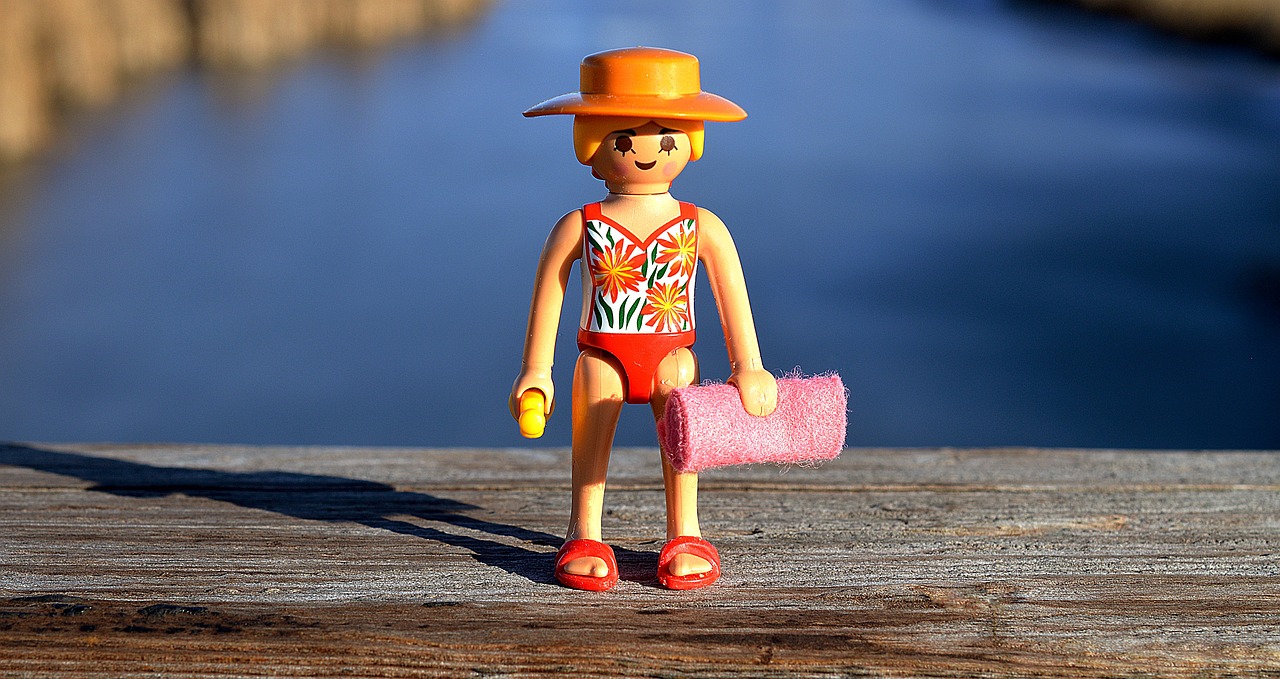
Post-Bath Care and Comfort
After you’ve successfully navigated the sometimes turbulent waters of bath time, it’s crucial to ensure your pet feels comfortable and secure. Just like humans, pets can feel vulnerable after a bath, so taking the right steps in post-bath care can make all the difference. It’s not just about drying them off; it’s about creating a positive experience that helps them associate bath time with love and care.
First and foremost, drying your pet properly is essential. Using a towel is a classic method, but the technique matters. Instead of rubbing them vigorously, which can feel like a mini wrestling match, try gently patting them dry. This method not only keeps them calm but also helps maintain their fur's natural texture. If your pet is comfortable with it, you might consider using a low-heat blow dryer. Just ensure that the dryer is at a safe distance from their skin to avoid burns, and keep it on a low setting to prevent startling them.
Here’s a quick table comparing different drying methods:
| Drying Method | Pros | Cons |
|---|---|---|
| Towel Drying | Gentle, easy, no equipment needed | Can take longer, may not be effective for thick coats |
| Blow Drying | Quick, effective for thick fur | Can be noisy, may scare some pets |
| Air Drying | Natural, no effort required | Can take a long time, may not be suitable in cold weather |
Once your pet is dry, it’s time to shower them with love and attention. This is where rewarding good behavior comes into play. If your furry friend remained calm during the bath, give them a treat or some extra cuddles. Positive reinforcement is key! It helps them associate bath time with rewards, making them more likely to cooperate in the future. You could also engage in a fun play session or offer their favorite toy as a reward.
Additionally, consider creating a post-bath comfort zone. This could be a cozy spot with their favorite blanket or bed where they can relax and feel secure. Make sure this area is away from any drafts or cold surfaces. Just like we enjoy curling up in a warm blanket after a shower, your pet will appreciate having a designated space to unwind.
Lastly, keep an eye on your pet for any signs of discomfort or stress after the bath. If they seem particularly anxious or restless, try to soothe them with gentle petting and a calm voice. Sometimes, a little extra love is all they need to feel at ease again. Remember, the goal is to create a positive, stress-free experience that both you and your pet can look forward to in the future!
- How often should I bathe my pet? It depends on the breed and lifestyle of your pet. Generally, once a month is sufficient for most dogs, while cats may only need occasional baths.
- What if my pet hates water? Gradual exposure to water and positive reinforcement can help. Start with just wetting their paws and gradually work your way up.
- Can I use human shampoo on my pet? No, it's best to use pet-specific shampoos as they are formulated for their skin's pH balance.
Drying Techniques
After the bath, the next challenge is getting your furry friend dried off without causing any stress. Just like humans, pets can feel uncomfortable when wet, and the drying process can be just as daunting as the bath itself. So, how do you make this part of the experience as pleasant as possible? Here are some effective drying techniques that will keep your pet calm and cozy.
First and foremost, patience is key. Start by using a soft, absorbent towel to gently pat down your pet. Avoid rubbing too vigorously, as this can irritate their skin and cause anxiety. Instead, think of it as a gentle massage—this not only dries their fur but also helps them feel secure and loved. If your pet enjoys being touched, this can be a wonderful bonding moment.
In addition to towels, you might consider using a pet-specific blow dryer. These are designed to be quieter and less intimidating than regular hair dryers. When using a blow dryer, keep it on a low setting and maintain a safe distance from your pet’s skin. Always check the temperature to ensure it’s comfortable; you don’t want to risk overheating or scaring your pet with loud noises. You can even make it a game by letting them sniff the dryer before using it, helping them become familiar with the sound and sensation.
Here’s a quick comparison of drying methods:
| Drying Method | Pros | Cons |
|---|---|---|
| Towel Drying | Gentle, soothing, and no noise | Can be time-consuming |
| Blow Dryer | Quick and effective | Can be scary if too loud or hot |
| Air Drying | Natural and stress-free | Can take a long time; may leave them cold |
Another effective method is air drying. If the weather permits, letting your pet air dry can be a great option. Just make sure they are in a warm, comfortable area where they can relax. This method is particularly useful for pets with longer fur, as it minimizes the risk of them getting tangled or matted from vigorous towel drying.
Regardless of the method you choose, always follow up with some positive reinforcement. After the drying session, reward your pet with a treat or their favorite toy. This helps them associate bath time and drying with positive experiences, making future baths easier for both of you. Remember, the goal is to create a stress-free environment where your pet feels safe and cared for.
- How often should I bathe my pet? - It depends on the breed and lifestyle of your pet. Generally, once a month is sufficient for most dogs, while cats may need less frequent baths.
- What if my pet hates water? - Gradual exposure and positive reinforcement can help. Start with just wetting their paws and gradually increase the exposure.
- Can I use human shampoo on my pet? - No, it's best to use shampoos specifically formulated for pets, as human products can irritate their skin.
Rewarding Good Behavior
When it comes to teaching your pet to tolerate bathing, is not just a nice-to-have—it's a game changer! Think of it as the cherry on top of a delicious sundae. By reinforcing positive actions during bath time, you create a positive association with the experience, making it less daunting for your furry friend. But how exactly do you reward good behavior effectively?
First, it’s essential to understand that rewards come in many forms. While treats are the most common, don't underestimate the power of praise, affection, and even playtime. For instance, if your pet stays calm while you lather them up, a hearty “Good job!” accompanied by a gentle scratch behind the ears can work wonders. It’s about making them feel like the rock stars they are!
Here are some effective types of rewards to consider:
- Treats: Small, tasty morsels can motivate your pet to behave well. Just be sure they are healthy and appropriate for your pet’s diet.
- Verbal Praise: A cheerful tone and enthusiastic words can boost your pet’s confidence and make them feel loved.
- Playtime: After a successful bath, engaging in a fun game can reinforce the idea that baths lead to good things.
Timing is crucial when it comes to rewards. You should offer the reward immediately after the desired behavior occurs. This helps your pet make the connection between their actions and the positive outcome. For example, if your dog sits calmly during rinsing, reward them right then and there! It’s all about creating a chain reaction of good vibes.
Moreover, consistency is key. If you reward your pet for good behavior one day but ignore it the next, they may become confused. Establishing a routine where they know what to expect can help them feel more secure and willing to cooperate during bath time. Think of it like a dance routine; when both partners know the steps, the performance is much smoother!
Finally, don’t forget to celebrate small victories. Maybe your pet didn’t wiggle as much as usual, or they let you rinse their paws without fussing. These are all commendable achievements worthy of a reward. By focusing on progress rather than perfection, you foster a more enjoyable experience for both of you. Remember, the goal is to transform bath time from a chore into a bonding experience filled with love and trust.
Q: How often should I reward my pet during bath time?
A: It’s best to reward your pet immediately after they exhibit good behavior. Start with frequent rewards and gradually decrease them as your pet becomes more comfortable.
Q: What if my pet doesn't respond to treats?
A: Every pet is different! If treats aren’t motivating, try using praise, petting, or playtime as rewards instead.
Q: Can I use the same rewards for different pets?
A: While some rewards can be universal, it’s important to tailor your approach to each pet’s preferences. Observe what excites them the most!
Q: What if my pet is still anxious even after rewards?
A: If your pet continues to show signs of anxiety, consider consulting a veterinarian or a professional trainer for personalized advice.
Frequently Asked Questions
- Why does my pet dislike baths?
Many pets have a natural aversion to water due to their instincts or past experiences. They may feel anxious because of the noise, the sensation of water, or simply because they are not accustomed to it. Understanding the root of their fear can help you address it effectively.
- What supplies do I need for bathing my pet?
Essential supplies for a successful bath include pet-friendly shampoo, a non-slip mat, towels, and a detachable showerhead or cup for rinsing. Having treats on hand for positive reinforcement can also make the process smoother and more enjoyable for your furry friend.
- Should I bathe my pet indoors or outdoors?
It depends on your pet's comfort level and the weather. Indoor baths can provide a controlled environment, while outdoor baths can be more fun and less stressful for some pets. Weigh the pros and cons based on your pet's personality and the space available.
- How can I introduce water to my pet gradually?
Start by letting your pet explore water in a shallow dish or tub. Use a gentle spray or a damp cloth to introduce water slowly, ensuring they associate it with positive experiences. Patience is key; take your time to help them acclimate.
- What are some effective rewards for my pet during bath time?
Rewards can vary based on your pet's preferences. Treats, toys, or verbal praise can motivate your pet to stay calm during baths. Experiment to find what excites your pet the most, and use these rewards consistently to reinforce good behavior.
- How do I recognize signs of stress in my pet?
Common signs of stress in pets include panting, whining, hiding, or attempting to escape. Being attentive to these signals allows you to adjust your approach and provide the comfort they need during bath time.
- What are some calming techniques I can use during bath time?
Speaking softly, using gentle touches, and maintaining a calm demeanor can significantly help soothe your pet. You might also consider playing soft music or using calming scents to create a relaxing environment.
- How should I dry my pet after a bath?
The best method for drying your pet involves using a soft towel to gently pat them dry. For pets that tolerate it, a low-heat blow dryer can be used, but ensure it’s at a safe distance to avoid burns. Always check for comfort and avoid rushing the drying process.
- How can I reinforce good behavior after bath time?
After a successful bath, offer treats or extra playtime to reward your pet. This positive reinforcement helps them associate bath time with good experiences, making them more willing to cooperate in the future.




